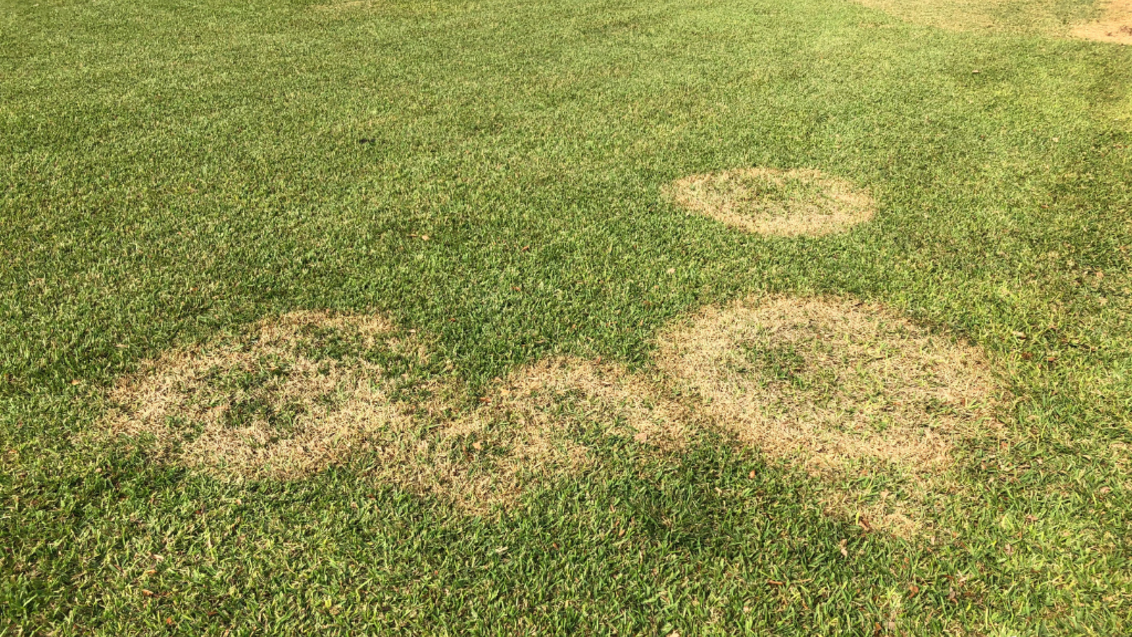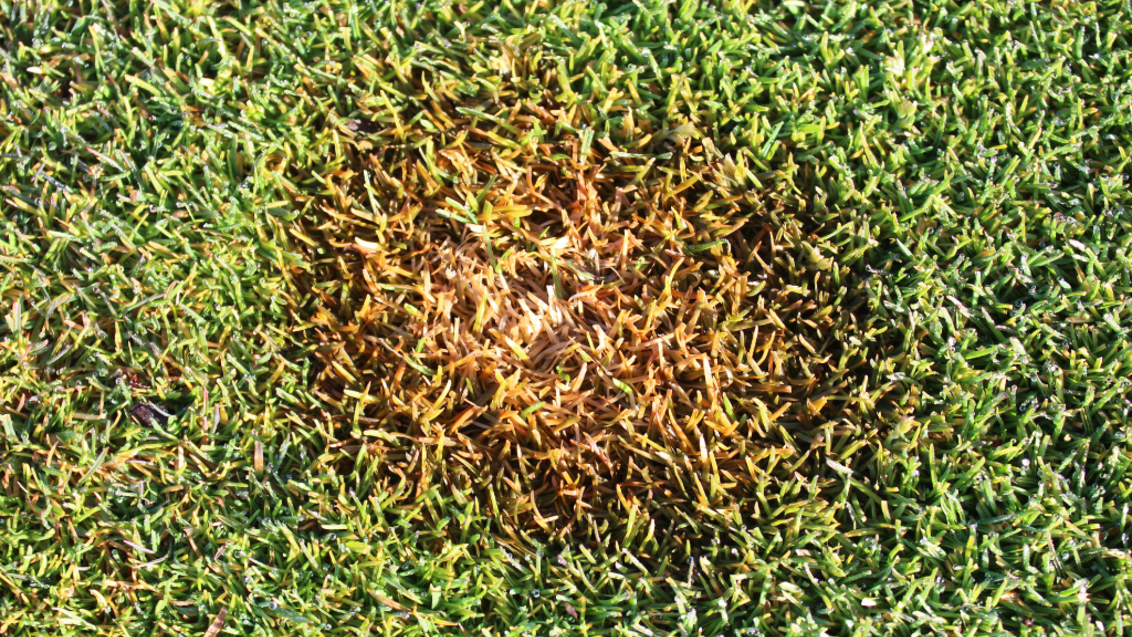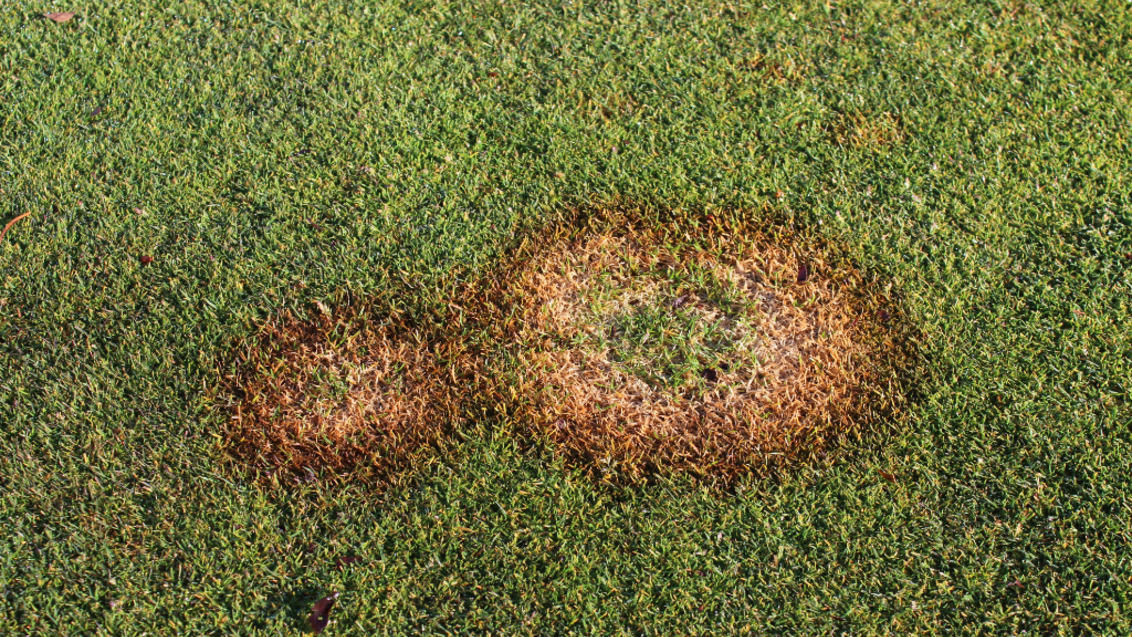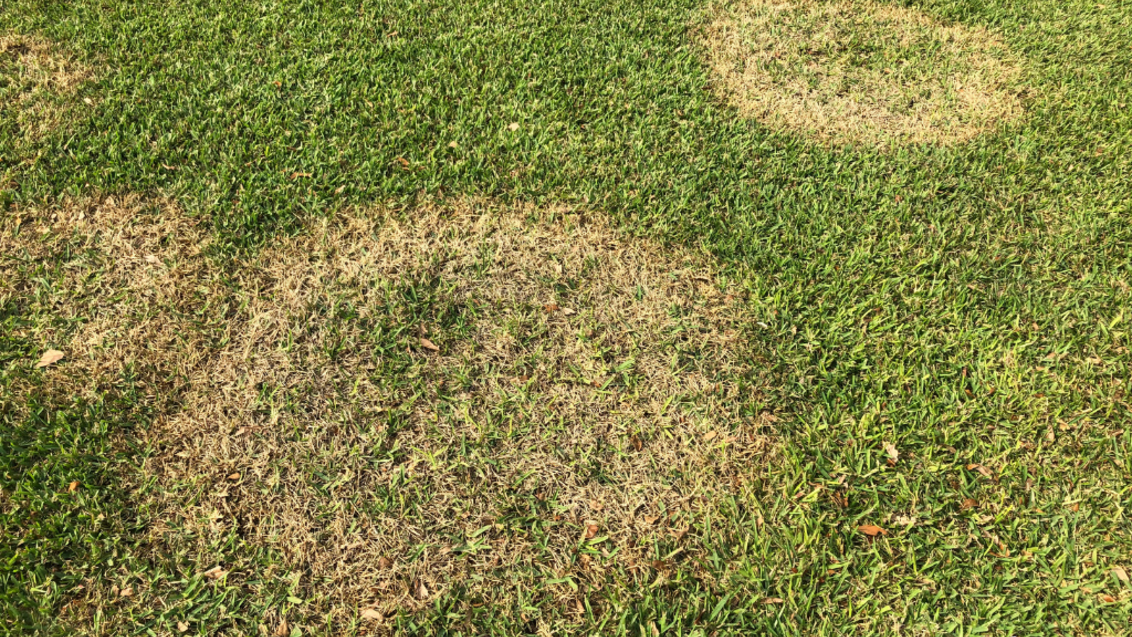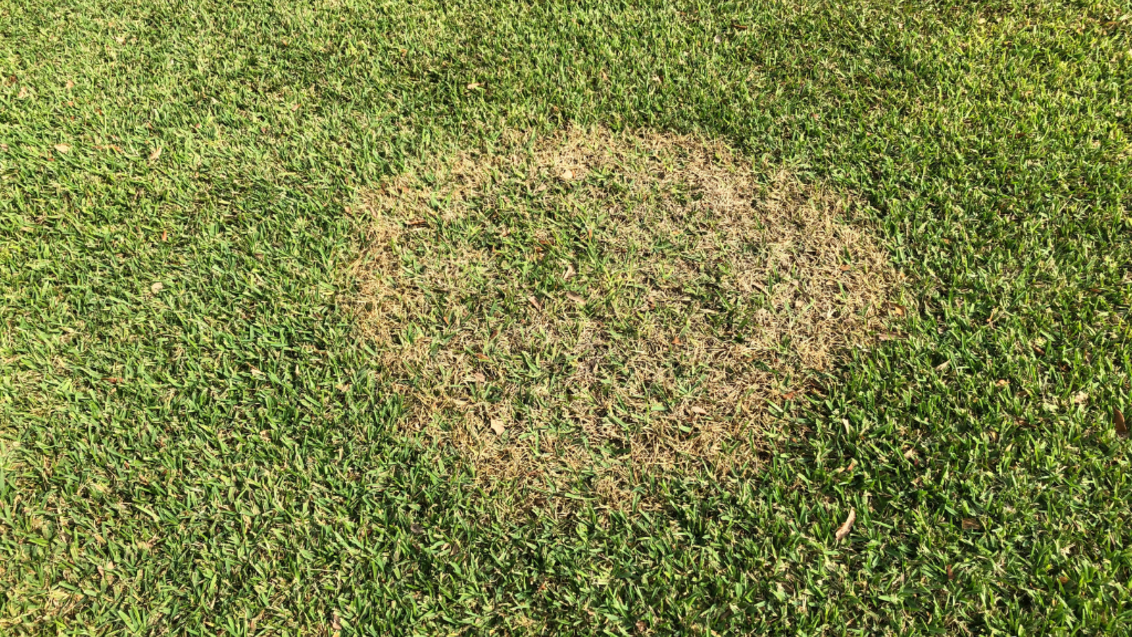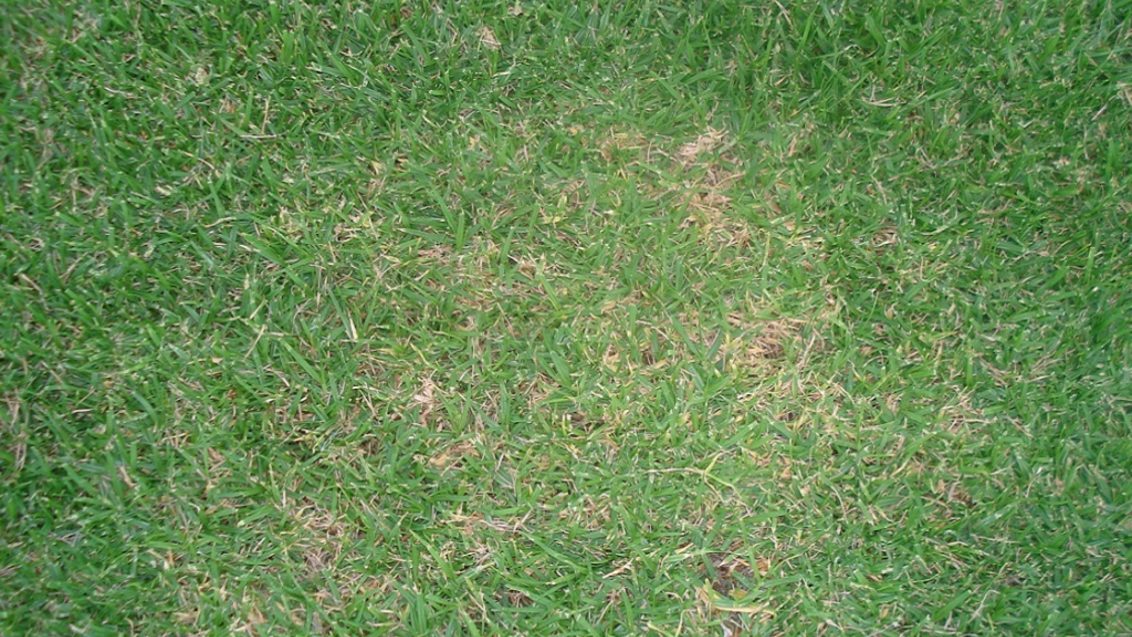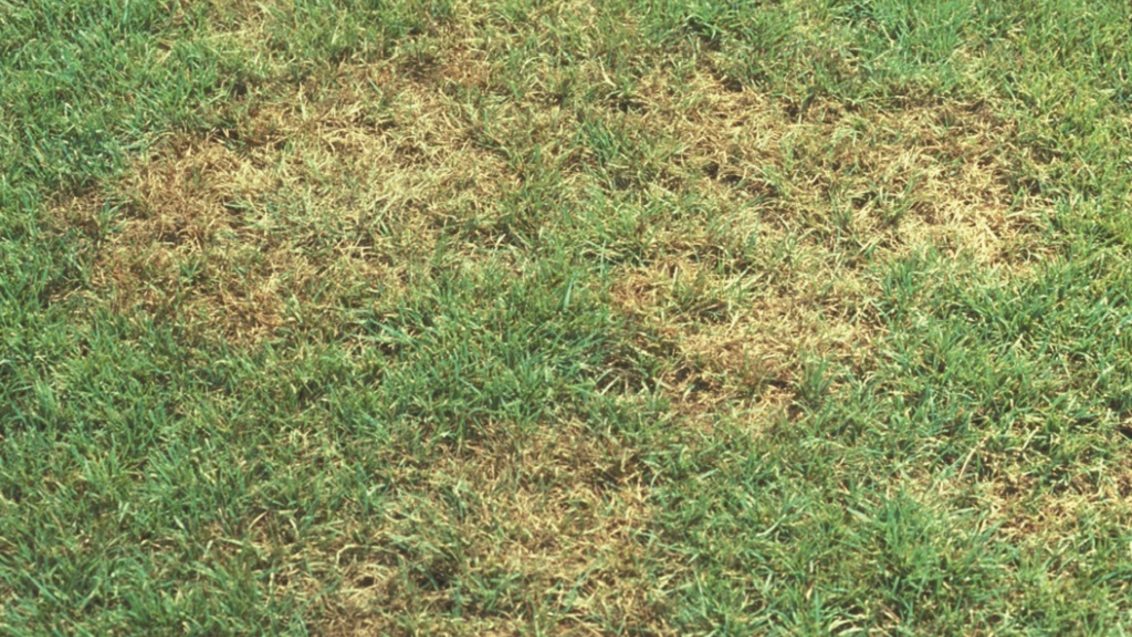Brown Patch
Rhizoctonia solani
Disease of Foliage and/or Roots
Susceptible Turf
Winter Grass, Couch, Bent Grass, Fescues, Kentucky Blue Grass, Ryegrass and Buffalo Grass
Symptoms
- Brown discoloured circular patches, from a few centimetres up to a metre in diameter, sometimes with a smoke ring of mycelium around the edges.
- "Smoke rings" appear as thin brown borders around the diseased patches in the early morning.
- Infected leaves are water-soaked and dark, later dying and turning dark brown.
- After the infected leaves die, new leaves can emerge from the surviving crowns.
- On wide bladed species, leaf lesions develop with tan centres and dark brown to black margins.
Conditions Favouring Disease
- High relative humidity and temperatures of over 28°C during the day and over 15°C at night.
- More than 10 hours a day of foliar wetness for several consecutive days.
- Turf grass species are most affected when night temperatures are consistently above 20°C with high humidity or moisture.
Management Tips
- Use low to moderate amounts of nitrogen, moderate amounts of phosphorous and moderate to high amount of potassium.
- Avoid nitrogen applications when the disease is active.
- Increase the height of cut.
- Increase the air circulation.
- Minimise the amount of shade.
- Irrigate turf early in the day.
- Improve the drainage of the turf.
- Reduce thatch.
- Remove dew from turf early in the day.
General Comments
The symptoms of Brown Patch can vary depending on the grass cultivar, climatic and atmospheric conditions, soil and intensity of the turf grass management. Brown Patch infestation is more severe when the turf is cut to a height less than the optimum for the turf species being grown.

